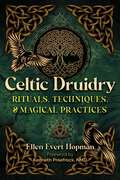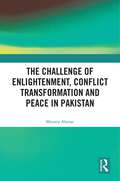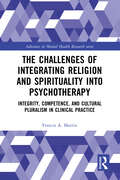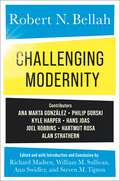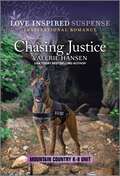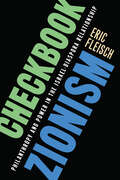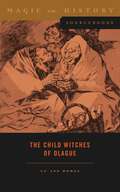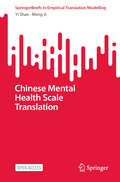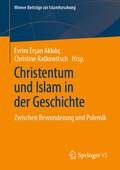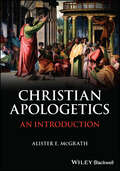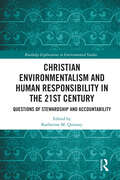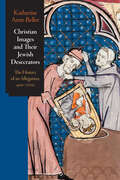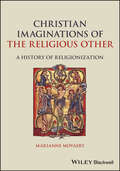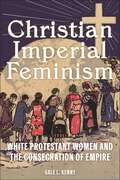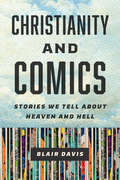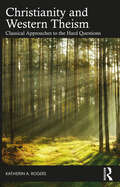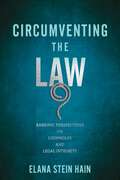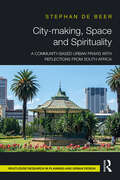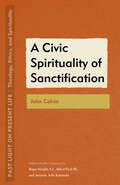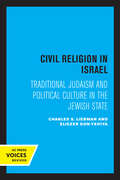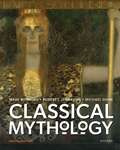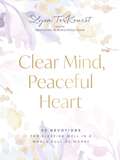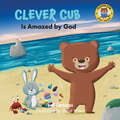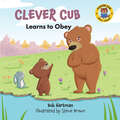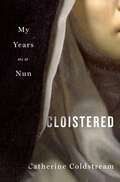- Table View
- List View
Celtic Druidry: Rituals, Techniques, and Magical Practices
by Ellen Evert Hopman• Explains how to make and use the essential tools of a Celtic Druid and how to create Druid rituals for seasonal rites, blessings, and other sacred observances • Details Druidic magical techniques and divination practices, as well as plant spells for performing magic with herbs • Explores the Gods and Goddesses of the Celtic pantheon, Druidic cosmology, and the Druidic festivals that occur throughout the year In this authentic handbook for the Celtic Druid path, Ellen Evert Hopman shares lessons, rituals, and magical techniques drawn from the ancient wisdom teachings of the Celts as well as a modern Druid Order created by the leading minds of 20th-century Celtic Reconstructionism. Hopman begins by exploring what we know about the original ancient Druids, citing Druid-contemporary sources such as Caesar and Diodorus Siculus as well as transcriptions of Druid oral teachings. She explains the basic tools and clothing of a Celtic Druid, including instructions for making the essential tools of the craft, such a Crane Bag, the Serpent Staff, and the Apple Branch, the tool used to open a Druid rite. She explores meditation techniques based on ancient texts and discusses the Gods and Goddesses of the Celtic pantheon, Druidic cosmology, and the Druidic festivals that occur throughout the turning of the year. She shares hymns to the Moon and the Sun as well as invocations for connecting with specific deities and elements. She also outlines the basics of Druidic liturgy, enabling you to create Druid rituals for seasonal rites, baby blessings, house blessings, hand-fastings, funerals, and other sacred observances. Detailing Druidic magical techniques, Hopman shares charms and incantations for abundance, protection, and healing as well as plant spells for performing magic with herbs. She discusses many forms of Druidic divination, including interpreting omens and divining with the ancient Irish alphabet, Ogham. Exploring the special connection between humans and Nature, a core component of Druidic practice, the author explains how to bond with Nature and the sacred land as well as examining the connection between Druids and trees. Revealing how to become a modern Druid, this concise yet detailed guide presents everything you need to know to start your journey on the Druidic path.
The Challenge of Enlightenment, Conflict Transformation and Peace in Pakistan
by Moonis AhmarThis book looks at the process of cultural enlightenment in the context of Pakistan. It undertakes an interesting and in-depth research focusing on how the world’s second largest Muslim state can learn from Europe’s heritage of enlightenment. It studies why Pakistan lacks a process of awakening and what the scope of cultural enlightenment in Pakistan is against the backdrop of militant Islam. The author argues that cultural enlightenment can help promote positive conflict transformation in Pakistan and discusses the ways in which challenges to establishing a culture of reasoning, tolerance, accommodation, social justice and peace can be dealt with. A unique contribution, this book will be of interest to students and researchers of philosophy, political science, history, international relations, South Asian studies and religious studies. It will also appeal to think tanks, policymakers and general readers interested in these topics.
The Challenges of Integrating Religion and Spirituality into Psychotherapy: Integrity, Competence, and Cultural Pluralism in Clinical Practice (Advances in Mental Health Research)
by Francis A. MartinThis book examines personal and professional understandings of religion in psychotherapy and advocates for integrity, competency, and cultural pluralism in clinical practice.A major feature of this book is that it confirms the massive proliferation of religion-oriented approaches to counseling and therapy in recent years. It attributes this rise to opportunism and exaggerated individualism among therapists and to the frequent failures of professional associations, clinical preparation programs, and other influences. In response to these influences, it identifies the need for guiding principles for integrating religion into therapy, discusses the religious issues that clients bring to therapy, and advocates for major changes in clinical practice, with emphasis on integrity and competence. Building on a large volume of research and using evidence-based conclusions, it clarifies how these two major features of contemporary life can be integrated with integrity and competence. The author maintains that religion should be a feature of the practice of counseling and therapy, so long as it addresses the clinically relevant needs of clients. However, it also explores how the religion of counselors and therapists often expresses the needs of counselors and therapists, instead of addressing the needs of their clients.In the context of these questions and discussion of contentious challenges, this book provides guidelines for relating religion with clinical practice and recommends needed actions by clinical preparation programs, professional associations, individual therapists, state legislatures, licensing boards, social service agencies, and corporations. All of this stands on the conspicuous need for professional accountability in the delivery of mental health care.
Challenging Modernity
by Robert N. BellahFrom the 1960s until his death in 2013, Robert N. Bellah was the preeminent figure in the study of religion and society. He broke new ground in mapping the religious dimensions of human experience, from the great breakthroughs of the first millennium BCE to the paradoxes of American civic life. In three final essays, published here for the first time, Bellah grapples with the contradictions of modernity, and seven leading thinkers respond with profound, exhilarating new perspectives on our present predicament.Challenging Modernity critically assesses the modern project to shed light on the tensions between its transcendent aspirations and the perils we now face. Its contributors analyze the roots of the collapse of the political, economic, and cultural institutions that promised perpetual progress but now threaten global catastrophe. Reflecting the range of Bellah’s scholarship, they span the disciplines of history, sociology, anthropology, and philosophy. They extend Bellah’s insight that only deep historical, cultural, and religious understanding can help us meet modernity’s harrowing challenges by sharing responsibility for the global interdependence of our common fate.
Chasing Justice (Mountain Country K-9 Unit #3)
by Valerie HansenA man falsely accused… Can a K-9 unit dig up the truth? While escorting a prison van transporting her ex-boyfriend who was wrongly convicted of murder, Deputy Selena Smith never expected the van to be violently forced off the road. But when she and Finn Donovan are attacked, Selena and her K-9 partner become his unlikely protectors. With gunmen closing in, they must hunt down the real killer. But will the truth free an innocent man…or make them the next victims?From Love Inspired Suspense: Courage. Danger. Faith.Mountain Country K-9 Unit Book 1: Baby Protection Mission by Laura ScottBook 2: Her Duty Bound Defender by Sharee StoverBook 3: Chasing Justice by Valerie HansenBook 4: Crime Scene Secrets by Maggie K. BlackBook 5: Montana Abduction Rescue by Jodie BaileyBook 6: Trail of Threats by Jessica R. PatchBook 7: Tracing a Killer by Sharon Dunn
Checkbook Zionism: Philanthropy and Power in the Israel-Diaspora Relationship
by Eric FleischAmerican Jews donate approximately $2.5 billion to Israel each year. Behind all that money and influence lies a power-sharing dynamic that has left an indelible mark on the relationship between Israeli and American Jews and on the direction of Israeli society to this day. Checkbook Zionism investigates how both parties have managed their interests, emotions, and attitudes about the important yet at times tense collaboration between them. By delving into the history of American Jews’ philanthropic giving to Israelis, Fleisch assesses the core nature of power sharing between both sides of the Jewish diaspora to the United States through in-depth contemporary case studies of the relationship between sixteen non-governmental organizations and their American Jewish donors. Field observation, document analysis, and interviews with leaders, activists, and select donors alike serve a critical role here, as Fleisch assesses whether these contemporary philanthropic associations repeat classic dynamics of power-sharing or whether they represent a marked departure from the Checkbook Zionism of old. The result is a new paradigm for evaluating power sharing that can be applied to future considerations of development in the Israel-Diaspora relationship.
The Child Witches of Olague (Magic in History Sourcebooks)
by Lu Ann HomzaIn the early seventeenth century, thousands of children in Spain’s Navarre region claimed to have been bewitched. The Child Witches of Olague features the legal depositions of self-described child witches as well as their parents and victims. The volume sheds new light on Navarre’s massive witch persecution (1608–14), illuminating the tragic cost of witch hunts and opening a new window onto our understanding of early modern Iberian life. Drawing from Spanish-language sources only recently discovered, Homza translates and annotates three court cases from Olague in 1611 and 1612. Two were defamation trials involving the slur “witch,” and the third was a petition for divorce filed by an accused witch and wife. These cases give readers rare access to the voices of illiterate children in the early modern period. They also speak to the emotions of witch-hunting, with testimony about enraged, terrified parents turning to vigilante justice against neighbors. Together the cases highlight gender norms of the time, the profound honor code of early modern Navarre, and the power of children to alter adult lives. With translations of Inquisition correspondence and printed pamphlets added for context, The Child Witches of Olague offers a portrait of witch-hunting as a horrific, contagious process that fractured communities. This riveting, one-of-a-kind book will appeal to anyone interested in the history of witch hunts, life in early modern Spain, and history as revealed through court testimony.
Chinese Mental Health Scale Translation (New Frontiers in Translation Studies)
by Meng Ji Yi ShanThis open access book illustrates the key steps and procedures of developing mental health scales into linguistically and culturally appropriate translations. Through illustrative case studies, we demonstrate that traditional forward and backward translation have significant methodological limitations when applied in mental health scale translation, such as linguistic and cultural inaccessibility and inaccuracy in the clinic. Our book will stimulate more academic debates and further systematic research into the significant, interdisciplinary area of mental health translation, which has been underexplored in Translation Studies.
Christentum und Islam in der Geschichte: Zwischen Bewunderung und Polemik (Wiener Beiträge zur Islamforschung)
by Evrim Erşan Akkılıç Christine RatkowitschDieser Band setzt sich in einem interdisziplinären Kontext mit mannigfaltigen Aspekten der Begegnungen zwischen Islam und Christentum in der christlichen und islamischen Geschichte auseinander. Die Spuren dieser Begegnungen reichen weit zurück und lassen sich in historischen, literarischen und theologischen Texten nachverfolgen. Die Beiträge richten einen detaillierten und fokussierten Blick auf die gegenseitigen Wahrnehmungen bzw. Spannungsverhältnisse, die Auswirkungen bis in die heutige Zeit haben.
Christian Apologetics: An Introduction
by Alister E. McGrathProvides an accessible overview of the theory and practice of Christian apologetics, written by one of the leading experts in the field Christian Apologetics is a compact yet comprehensive introduction to the theological discipline devoted to the intellectual defense of the truth of the Christian religion. Assuming no previous knowledge of Christian apologetics, this student-friendly textbook clearly explains the major theoretical and practical aspects of the tradition while exploring its core themes, historical development, and current debates. Using a non-denominational approach, world-renowned Christian scholar Alister E. McGrath engages the ideas of a wide range of representative apologists and explores the ways they have been applied throughout history, and can still be used today. Concise, easy-to-digest chapters gradually build students' knowledge and confidence, moving from basic definitions and concepts to more advanced theory and practical application. Throughout the text, the author engages a variety of cultural concerns about religious belief, illustrates the real-life connection of apologetic studies and ministries in the Church, and offers clear explanations and vigorous defenses of the faith that students can adopt in their own writing and speaking. Introduces the art and science of explaining and commending the Christian faith Presents approaches to apologetics that emphasize the positive appeal of Christianity to the imagination and emotions Covers the major approaches to apologetics, identifies their strengths and weaknesses, and discusses their key representatives Helps readers in ministry and outreach defend Christianity against misunderstandings and misrepresentations Addresses the real-world application of apologetics, including role models, good practice, and established wisdom Features case studies of Christian apologists such as G. K. Chesterton, Dorothy L. Sayers, and Tim Keller Includes study questions, activities, further reading lists, full references, and links to video and audio resources developed by the authorDesigned to meet the needs of teachers looking for a clear and reliable introduction to the field, Christian Apologetics: An Introduction is an excellent textbook for undergraduate and graduate apologetics courses in colleges and seminaries, as well as church courses and study groups across Christian denominations.
Christian Environmentalism and Human Responsibility in the 21st Century: Questions of Stewardship and Accountability (Routledge Explorations in Environmental Studies)
by Katherine M. QuinseyChristian Environmentalism and Human Responsibility in the 21st Century comprises original scholarly essays and creative works exploring the implications of Christian environmentalism through literary and cultural criticism and creative reflection. The volume draws on a flourishing recent body of Christian ecocriticism and environmental activity, incorporating both practical ethics and environmental spirituality, but with particular emphasis on the notion of human responsibility. It discusses responsibility in its dual sense, as both the recognized cause of environmental destruction and the ethical imperative of accountability to the nonhuman environment. The book crosses boundaries between traditional scholarly and creative reflection through a global range of topics: African oral tradition, Ohio artists off the grid, immigrant self-metaphors of land and sea, iconic writers from Milton to O’Connor to Atwood, and Indigenous Canadian models for listening to the nonhuman Mother of us all. In its incorporation of academic and creative pieces from scholars and creative artists across North America, this volume shows how environmental work of its nature and necessity crosses traditional academic and community boundaries. In both form and orientation, this collection speaks to the most urgent intellectual, physical, social, and spiritual needs of the present day. This book will appeal to scholars, researchers, and upper-level students interested in the relationship between religion and environment, ethics, animal welfare, poetry, memoir, and post-secularism.
Christian Images and Their Jewish Desecrators: The History of an Allegation, 400-1700 (Jewish Culture and Contexts)
by Katherine Aron-BellerIn Christian Images and Their Jewish Desecrators, historian Katherine Aron-Beller analyzes the common Christian charge that Jews habitually and compulsively violated Christian images, identifying this allegation as one that functioned alongside other anti-Jewish allegations such as ritual murder, blood libel, and host desecration to ultimately inform dangerous and long-lasting prejudices in medieval and early modern Europe. Through an analysis of folk tales, myths, legal proceedings, and religious art, Aron-Beller finds that narratives alleging that Jews committed violence against images of Christ, Mary, and the disciples flourished in Europe between the fifth and seventeenth centuries. She then explores how these narratives manifested differently across the continent and the centuries, finding that their potency reflected not Jewish actions per se, but Christians’ own concerns about slipping into idolatry when viewing depictions of religious figures. In addition, Aron-Beller considers Jews’ own attitudes toward Christian imagery and the ways in which they responded to and rejected—or embraced—such allegations. By examining how desecration allegations affected Jewish individuals and communities spanning Byzantium, medieval England, France, Germany, and early modern Spain and Italy, Aron-Beller demonstrates that this charge was a powerful expression of the Christian majority’s anxiety around committing idolatry and their eagerness to participate in practices of veneration that revolved around visual images—an anxiety that evolved through the centuries and persists to this day.
Christian Imaginations of the Religious Other: A History of Religionization
by Marianne MoyaertExplores how Christians created, used, and adapted religionized categories of non-Christians through the centuries Christian Imaginations of the Religious Other traces the genealogy of religionization, the various ways Christians throughout history have created a sense of religious normativity while simultaneously producing various categories of non-Christian "otherness." Covering a broad expanse of processes, practices, and socio-political contexts, this innovative volume analyzes the complex intersections of patterns of religionization in different eras while investigating their entanglements with racialization, sexualization, and ethnicization. With a readable and accessible style, Marianne Moyaert offers a nuanced and well-balanced critical analysis of how and why Christianity’s otherswere named, categorized, essentialized, and governed by those exemplifying Christian normativity in Western European society. The author takes a longue durée approach — a long-term perspective on history that extends past human memory and the archaeological record — that integrates different case studies and a variety of ecclesial, theological, and literary documents. Throughout the text, Moyaert demonstrates how religionization shaped the ways Christians classified people, organized Christian societies, interacted with different Christian and non-Christian groups, and more. Surveys the relationship between shifts in Christian normativity and the way non-Christians are imagined Helps readers connect the lasting effects of patterns of religionization with their everyday experiences Discusses the role of Christian expansion in the differential and unequal treatment of Christianity’s others Examines legal regulations and disciplinary practices that were established to define the boundaries between Christians and non-Christians Incorporates a wide range of scholarly resources, cutting-edge research, and the most recent insights and issues in the field Includes textboxes with helpful summaries, illustrations, and commentary in each chapter Christian Imaginations of the Religious Other: A History of Religionization is an excellent textbook for undergraduate and graduate courses ininterreligious studies, comparative theology, theological approaches to religious diversity, Christian-Jewish-Muslim relations, race and religion, and theorizing religion."Professor Moyaert is one of the world’s best scholars of comparative theology. In this magisterial new work, she helps scholars of religion to better learn how religious images, whether drawn with pictures or words, are crucial to how we understand ourselves and each other." - Amir Hussain, President, American Academy of Religion"Breathtaking in scope and detail, Moyaert offers an original history of the ways Christians have projected distorted images of their religious ‘others,’ with devastating material consequences. Her illuminating story of the past is a searchlight for our present." - Jeannine Hill Fletcher, Professor of Theology, Fordham University"Christian Imaginations is a superb study of the role that Western political programs play in the historical construction of identity boundaries. Analytically erudite and socially committed, Moyaert’s book powerfully interrogates what counts as religion making this text a must-read for anyone interested in interreligious studies." - Santiago Slabodsky, Florence and Robert Kaufman Professor in Jewish Studies, Hofstra University"Raising the historical formation of religious identities to the level of contemporary treatments of gender and racialization, Christian Imaginations of the Religious Other is essential reading for students of religion." - Michelle Voss, Professor of Theology and Past Principal, Emmanuel College of Victoria University in the University of Toronto"Crafting a Western European mosaic of religionization's turbulent
Christian Imperial Feminism: White Protestant Women and the Consecration of Empire (North American Religions)
by Gale L. KennyIlluminates how white American Protestant women embraced a racially specific version of socialinclusiveness that centered themselves as the normAmidst the global instability of the early twentieth century, white Christian American women embracedthe idea of an “empire of Christ” that was racially diverse, but which they believed they were uniquelyqualified to manage. America’s burgeoning power, combined with women’s rising roles within thechurch, led to white Protestant women adopting a feminism rooted in religion and imperialism.Gale L. Kenny examines this Christian imperial feminism from the women’s missionary movement tocreate a Christian world order. She shows that this Christian imperial feminism marked a break from anearlier Protestant world view that focused on moral and racial purity and in which interactions amongraces were inconceivable. This new approach actually prioritized issues like civil rights and racialintegration, as well as the uplift of women, though the racially diverse world Christianity it aspired towas still to be rigidly hierarchically ordered, with white women retaining a privileged place as guardians.In exposing these dynamics, this book departs from recent scholarship on white evangelical nationalismto focus on the racial politics of white religious liberalism. Christian Imperial Feminism adds a necessarylayer to our understanding of religion, gender, and empire.
Christianity and Comics: Stories We Tell about Heaven and Hell
by Blair DavisThe Bible has inspired Western art and literature for centuries, so it is no surprise that Christian iconography, characters, and stories have also appeared in many comic books. Yet the sheer stylistic range of these comics is stunning. They include books from Christian publishers, as well as underground comix with religious themes and a vast array of DC, Marvel, and Dark Horse titles, from Hellboy to Preacher. Christianity and Comics presents an 80-year history of the various ways that the comics industry has drawn from biblical source material. It explores how some publishers specifically targeted Christian audiences with titles like Catholic Comics, books featuring heroic versions of Oral Roberts and Billy Graham, and special religious-themed editions of Archie. But it also considers how popular mainstream comics like Daredevil, The Sandman, Ghost Rider, and Batman are infused with Christian themes and imagery. Comics scholar Blair Davis pays special attention to how the medium’s unique use of panels, word balloons, captions, and serialized storytelling have provided vehicles for telling familiar biblical tales in new ways. Spanning the Golden Age of comics to the present day, this book charts how comics have both reflected and influenced Americans’ changing attitudes towards religion.
Christianity and Western Theism: Classical Approaches to the Hard Questions
by Katherin A. RogersThis book explores central philosophical questions in Christian theology and doctrine through the perspectives of three of the most influential Christian thinkers: St. Augustine, St. Anselm, and St. Thomas Aquinas. Chapters analze long-contested debates around the Trinity, Original Sin, the Incarnation, Grace, Divine Foreknowledge and Free Will, the Afterlife, and Christian Exclusivity. From these topics emerge the "hard questions": How are ideas of monotheism and the Trinity reconciled? Is the doctrine of the Incarnation coherent? Why does God give grace to some and not others? How can the afterlife be understood? How should non-Christians be treated? Through a compelling comparative investigation of these ideas, Christianity and Western Theism uses the enduring concepts of three towering philosophers to show that Christian doctrine, though difficult, is coherent and, to some extent, understandable. As an engaging and accessible introduction to this topic, this book is the ideal resource for new students of Christian Thought, Christian Philosophy, Philosophy of Religion, and Medieval Philosophy.
Circumventing the Law: Rabbinic Perspectives on Loopholes and Legal Integrity (Jewish Culture and Contexts)
by Elana Stein HainCircumventing the Law probes the rabbinic logic behind the use of loopholes, the legal phenomenon of finding and using gaps within law to achieve otherwise illegal outcomes. The logic of ha’aramah, a subset of rabbinic legal circumventions mostly defined as a tool for private life, underpins both well-known circumventions, such as selling leaven before Passover, and lesser-known mechanisms, such as designating an animal intended for sacrifice “blemished” before birth to allow it to be slaughtered for food instead. Elana Stein Hain traces the development of these loopholes over time, revealing that rabbinic literature does not consistently accept or reject loopholes. Instead, rabbinic Judaism applies categories of evasion (prohibited), avoidance (permitted), and avoision (contested) to loopholes on a case-by-case basis. The intended outcome of a given loophole determines its classification, as does the legal integrity of the circumventive process in question.Yet these understandings of loopholes are not static—instead, rabbinic attitudes toward loopholing change over time. Early works display an objective, performative understanding of the self and of intention, but evolve over time to reflect more subjective and intimate understanding of the self and intention. This evolution redefines what legal integrity means in Jewish legal philosophy.Circumventing the Law brings readers through the Second Temple period to the modern era to see how loopholing has evolved over millennia. With a focus on late antiquity, Stein Hain explores tannaitic literature, the Palestinian Talmud, and contemporaneous Greco-Roman and Persian thought to show that when warranted, Jewish rhetoric and philosophy around understandings of loopholes was a unique phenomenon that relied on changes in understanding the definition of integrity itself, a key finding for scholars of Jewish Studies and of religious and of secular law writ large.
City-making, Space and Spirituality: A Community-Based Urban Praxis with Reflections from South Africa
by Stéphan de BeerThis book is about the soul of the city, embodied in its spaces and people. It traces dynamics in inner city neighbourhoods of South Africa’s post-apartheid capital, Pretoria. Viewing the city through its most vulnerable people and places, it recognizes that urban space is never neutral and shaped by competing value frameworks. The first part of the book invites planners, city-makers, and ordinary urban citizens, to consider a new self-understanding, reclaiming their agency in the city-making process. Through the metaphor of "becoming like children", planning practice is deconstructed and re-imagined. A praxis-based methodology is presented, cultivating four distinct moments of entering, reading, imagining and co-constructing the city. After deconstructing urban spaces and discourses, the second part of the book explores a concrete spirituality and ethic of urban space. It argues for a shift from planning as technocracy, to planning as immersed, participatory artistry: opening up to the "genius" of space, responsive to urban cries, and joining to construct new, soul-full spaces. Local communities and interconnected movements become embodiments of urban alternatives – through resistance and reconstruction; building on local assets; animating local reclamations; and weaving nets of hope that will span the entire city. Providing a concrete methodology for city-making that is rooted in a community-based urban praxis, this book will be of interest to urban planning researchers, professional planners and designers and also grass-root community developers or activists.
A Civic Spirituality of Sanctification: John Calvin (Past Light on Present Life: Theology, Ethics, and Spirituality)
by John CalvinThis volume presents the spirituality of John Calvin in three short texts drawn from his Institutes of the Christian Religion. Many consider Calvin the most influential thinker of the sixteenth century. His ideas flowed from Geneva into northern Europe, to the English-speaking lands of Britain, and through the Puritans to North America. The prolific writings of Calvin across several genres open up many aspects of Christian living, and each one offers an entrée to his spirituality. On the supposition that “spirituality” refers to the way people or groups lead their lives in relation to ultimacy, three texts have been chosen to form the axis for this interpretation of Calvin’s contribution. These texts deal with his theological view of law, a definition of sanctification, and a short treatise on the Christian life. The portrait of Calvin’s spirituality that emerges from these texts and the larger framework of his theology, his ecclesiology, and his career as church leader and civic organizer can be summarized in the following phrase: a practical spirituality of sanctification by participation in society. One cannot find all of that in these texts, but they establish a platform on which the pieces fall into place. The story of his early life and formation, along with several key ideas that characterize the man and his vision, will help to draw a sharper, more distinctive picture of at least this influential aspect of Calvin’s spirituality. It is one that bears direct relevance, with appropriate adjustments, to life today.
Civil Religion in Israel: Traditional Judaism and Political Culture in the Jewish State
by Charles S. Liebman Eliezer Don-yehiyaThis title is part of UC Press's Voices Revived program, which commemorates University of California Press’s mission to seek out and cultivate the brightest minds and give them voice, reach, and impact. Drawing on a backlist dating to 1893, Voices Revived makes high-quality, peer-reviewed scholarship accessible once again using print-on-demand technology. This title was originally published in 1983.
Classical Mythology
by Mark Morford Robert J. Lenardon Michael ShamBuilding on the best-selling tradition of previous editions, Classical Mythology, Twelfth Edition, is the most comprehensive survey of classical mythology available―and the first full-color textbook of its kind. Featuring the authors' clear and extensive translations of original sources, it brings to life the myths and legends of Greece and Rome in a lucid and engaging style. The text contains a wide variety of faithfully translated passages from Greek and Latin sources, including Homer, Hesiod, all the Homeric Hymns, Pindar, Aeschylus, Sophocles, Euripides, Herodotus, Plato, Lucian, Lucretius, Vergil, Ovid, and Seneca. The acclaimed author team incorporates a dynamic combination of poetic narratives and enlightening commentary to make the myths come alive for students. Offering historical and cultural background, they also examine the enduring survival of classical mythology and its influence in the fields of art, literature, music, dance, and film.
Clear Mind, Peaceful Heart: 50 Devotions for Sleeping Well in a World Full of Worry
by Lysa TerKeurstGod not only has the whole world in His hands; He's holding the details of your life in His faithful hands as well.What lies heaviest on your heart as you lay your head on your pillow? Are paralyzing fear and anxiety stealing tomorrow's peace? Listen to this invitation from Jesus: "Come to me, all you who are weary and burdened, and I will give you rest" (Matthew 11:28 NIV). Experiencing this kind of rest won't come from escapism, more vacation days, or stuffing our feelings. Jesus Himself provides rest to our weary souls. While He may not always fix everything right away, we can fix our thoughts on His Word. In doing this, we can sleep at night with ease knowing that God has it all under control.Through the pages of Clear Mind, Peaceful Heart, written by New York Times bestselling author Lysa TerKeurst and her friends at Proverbs 31 Ministries, you will be equipped to:Quiet fearful and anxious thoughts that always seem to be the loudest before bedtime by incorporating the Bible into your nightly routineFind relief from the stress of daily obligations and pressures through 50 encouraging devotions and guided prayers written by women like youRelease the heaviness you feel about hard situations in your life so you can wake up refreshed and walk into the next day with courage We may feel afraid, but we don't have to live afraid. Let this devotional help you fall asleep tonight with a clear mind and a peaceful heart.
Clever Cub Is Amazed by God (Clever Cub Bible Stories)
by Bob HartmanClever Cub is a curious little bear who LOVES to cuddle up with the Bible and learn about God. Clever Cub thinks the sea is amazing! Mama Bear reminds him that the Maker of the seas is even more amazing as she tells her cub the story of Jesus walking on water. In this engaging picture book, the author of the YouVersion Bible App for Kids: Tells the incredible story of Jesus walking across the Sea of Galilee in Mark 6:45–54 Helps kids ages 3 to 6 think of all the amazing things Jesus did Teaches young readers that God is worthy of praise and trust Clever Cub Is Amazed by God is part of the delightful Clever Cub Bible Stories series. Also check out Clever Cub Explores God&’s Creation, Clever Cub Sings to God, Clever Cub Gives Thanks to God, Clever Cub Welcomes Baby Jesus, Clever Cub Learns about Love, Clever Cub and the Easter Surprise, Clever Cub Learns to Share, Clever Cub Trusts God, Clever Cub and the Case of the Worries, Clever Cub Tells the Truth, Clever Cub Forgives a Friend, Clever Cub Invites Someone New, and Clever Cub Learns to Obey.
Clever Cub Learns to Obey (Clever Cub Bible Stories)
by Bob HartmanFrom bestselling children&’s author Bob Hartman, the Clever Cub Bible Stories series uses vibrant illustrations and engaging stories to help parents teach children biblical truths. Children ages 3 to 6 will learn about the importance of obedience and how God is amazing in books 13 and 14 of the popular Clever Cub Bible Stories series from author Bob Hartman. Clever Cub Learns to Obey: Papa Bear tells Clever Cub to apologize to Skippy Squirrel, but Clever Cub refuses to obey. Through Papa Bear&’s retelling of the story of Elisha and Naaman (2 Kings 5:1-19), Clever Cub sees that obeying God is always good to do—even when it&’s hard! Questions at the end of every book in the Clever Cub Bible Stories series help parents and ministry leaders begin conversations.
Cloistered: My Years as a Nun
by Catherine Coldstream"A profoundly moving memoir which gripped me . . . It’s about spirituality and asceticism and silence and sisterhood, but also about how flawed human beings can abuse power and how hermetically sealed communities, which should care for and protect their members, can be dangerously vulnerable to threats from inside their walls.” - Mark Haddon, author of The Curious Incident of the Dog in the Nighttime, The Porpoise and othersAn astonishing memoir of twelve years as a contemplative nun in a silent monastery.Cloistered takes the reader deep into the hidden world of a traditional Carmelite monastery as it approaches the third Millennium and tells the story of an intense personal journey into and out of an enclosed life of poverty, chastity, and obedience. Finding an apparently perfect world at Akenside Priory, in Northumberland, Catherine trusts herself to a group of twenty silent women, believing she is trusting herself to God. As the beauty and mystery of an ancient way of life enfold her, she surrenders herself wholly to its power, quite unaware of the complexity and dangers that lie ahead.Cut off from the wider world for decades, the community has managed to evade accountability to any authority beyond itself. When Sister Catherine realises that a mesmerising cult of the personality, with the distortions it entails, has replaced the ancient ideal of religious obedience, she is faced with a dilemma. Will she submit to this, or will she be forced to speak out?An exploration of the limits of trust, Cloistered shows us how far youthful idealism can take us along the road of self-surrender, and of how much harm is done when institutional flaws go unacknowledged. Catherine’s honest account of her time in the monastery – and her dramatic flight from it – is both a love song to a lost community and an exploration of what is most compelling, yet most potentially destructive when closed human groups become laws unto themselves.
